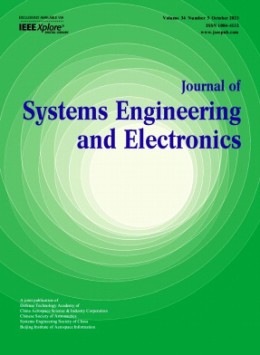如何縮短《Journal of Systems Engineering and Electronics》雜志的審稿周期?
來源:優發表網整理 2025-04-03 18:27:38 2290人看過
想要縮短《Journal of Systems Engineering and Electronics》雜志的審稿周期需要作者、編輯部和審稿人等多方面的共同努力,作者可以采取一些有效措施,間接地加快審稿進度,提升稿件的處理效率。
建議如下:
一、提高論文質量
(1)嚴格遵循投稿要求:在投稿前,仔細閱讀《Journal of Systems Engineering and Electronics》雜志的投稿指南,包括格式要求、字數限制、參考文獻格式等。確保稿件符合雜志的規范,避免因格式問題被退回修改,從而耽誤時間。
(2)提高論文質量:確保論文的研究內容具有創新性和學術價值,數據準確,論證嚴謹,語言表達清晰流暢。高質量的稿件更容易通過初審,進入同行評審階段。
二、選擇合適的投稿時機
(1)關注期刊審稿周期:在投稿前,了解《Journal of Systems Engineering and Electronics》雜志的審稿周期(預計1-3個月)和發表周期(雙月刊),以便合理安排投稿時間。
(2)關注期刊動態:了解期刊的專題征稿或熱點話題,針對性地投稿,可能獲得優先處理。
三、與編輯部保持良好溝通
(1)主動了解審稿進度:如果超過預計的審稿時間仍未收到回復,可以禮貌地向編輯部發送郵件,詢問稿件的審稿進度。
(2)尊重審稿意見:認真對待審稿意見,積極修改論文中的不足之處,共同探討論文的改進方向。
需要注意的是,縮短審稿周期的前提是保證稿件的質量,不能為了追求速度而犧牲學術嚴謹性。
《Journal of Systems Engineering and Electronics》雜志創刊于1990年,是由中國航天科工集團主管、中國航天科工防御技術研究院;中國宇航學會;中國系統工程學會主辦的學術理論雙月刊。國內刊號CN:11-3018/N,國際刊號ISSN:1004-4132。該雜志以推動科學改革與發展、探索科學規律為宗旨,致力于為科學工作者、研究者和管理者提供一個學術交流的平臺。
《Journal of Systems Engineering and Electronics》雜志投稿建議:
Aims and scope
The journal, keeping abreast with the development trend of science and technology worldwide, reports the latest developments and achievements in systems engineering and electronics and related research areas, and encourages various academic views. The journal welcomes papers from a wide variety of countries.
The journal strives to publish high-quality papers reporting original work in both theoretical and practical research results within the journal scope, involving system analysis, system modeling and simulation, military system analysis, aircraft control, C3I, radar, information systems engineering, machine intelligence, artificial neural networks, information acquisition and processing, aerospace electronics, and other topics in all related fields.
Title
The title is centered on the page and should be short and concise. Please limit the title to a maximum length of 10 words. The author’s name follows and is also centered on the page. The author’s last name should be preceded by the other names spelled out in full. The author’s affiliation and address are also needed.
The corresponding author should be clearly indicated with the asterisk (i.e., *) and given on the bottom of the first page. Please provide the financial support acknowledgments (name and number) on the bottom of the first page.
Abstract
An abstract, not exceeding 200 words, is required for all papers. Acronyms and abbreviations are spelled out at first mention in the abstract. It should be a summary of the paper and not an introduction. Because the abstract may be used in abstracting journals, it should present concisely the purposes, methodology used, results obtained, and conclusions.
Keywords
The author must provide a list of keywords, up to a maximum of six. No acronyms and abbreviations should be used.
Text
Text should be typed in double-column. The introduction of paper should explain the nature of the problem, previous work, purpose, and contribution of the paper. It is assigned the number “1” and following sections are assigned number as needed. For example, the third section of a paper might be “3. Simulation results” headings. Acronyms and abbreviations are spelled out at first mention in the text, even they have already been defined in the abstract.
Figures and tables
The authors must ensure figures of sufficient quality and resolution. Figure captions appear below the figures. Figures should be numbered in the order they appear in the text. Table titles appear above the tables. Please verify that the figures and tables you mention in the text actually exist. When referring to a figure or a table in the text, use the abbreviation “Fig.” even at the beginning of a sentence, and do not abbreviate “Table”.
Equations
Number equations consecutively with equation numbers in parentheses flush with the right margin, as in (1). Be sure that the symbols in the equation have been defined before the equation appears or immediately following. When referring to “(1)”, do not use “Eq. (1)” or “equation (1),” except at the beginning of a sentence: “Equation (1) is ...”.
Conclusion
A conclusion must be included and should indicate clearly the advantages, limitations, and possible applications of the paper.
Acknowledgment
Individuals or units other than authors who were of direct help in the work should be acknowledged by a brief statement following the conclusion. This heading is not assigned a number.
References
Only articles that have been published may be included in the references. Each reference is referred to in the text by a number enclosed in a square bracket (i.e., [3]). References must be numbered and ordered according to where they are first mentioned in the paper. A reference list must be included using the following information as a guide.
Biographies
Short biographies (120-150 words) should be provided that detail the authors’ education, work histories and research interests as well as their E-mail. The authors’ full names are needed. Small (2.5 cm×3.5 cm), black-and-white and high- resolution (300 dpi) photos of each author should be included.
聲明:以上內容來源于互聯網公開資料,如有不準確之處,請聯系我們進行修改。
